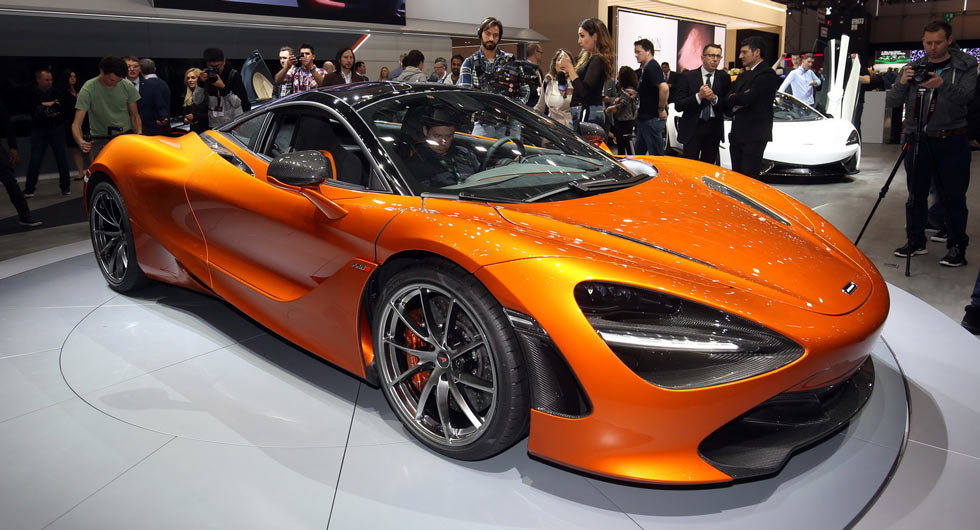Terminator 2. The Empire Strikes Back. Aliens. These may be more the exception to than the rule, but some sequels have been known to surpass the originals. And that’s what McLaren is going for with the introduction of the new 720S at the 2017 Geneva Motor Show.
McLaren Automotive hit the scene in 2011 with the launch of the MP4-12C, which in turn lead to the 650S in what has since been aligned as the company’s core Super Series. Compelling as it is, though, the 650S was more of a refresh on the 12C. What you see here is a completely new model – and McLaren’s first real effort at entirely replacing one of its celebrated supercars.
Like its predecessors and stablemates, it’s built around a carbon monocoque, with a twin-turbo V8 mounted behind two seats and driving the rear wheels. But those building blocks have all been reworked, and so has everything else around them.
For starters, the engine that displaces 3.8 liters in the 650S (and everything else Woking makes) has been enlarged to a nice round 4.0. It’s also been fitted with new twin-scroll turbochargers and lighter internal components – 41 percent of which have been replaced from the previous version.
Output has increased as a result to 710 horsepower and 568 lb-ft of torque. In and of itself, that’s already enough to embarrass the new Lamborghini Huracan Performante and the Ferrari 488 GTB by both measures, and by some margin. In fact, you’d need to step up to a twelve-cylinder supercar like the new Ferrari 812 Superfast or Lamborghini Aventador S to exceed those figures.
Impressive, but there’s more to McLaren’s latest than its output. The power-to-weight ratio (which the automaker claims as the best in its segment) is further optimized by a lighter monocoque chassis and other weight-reduced components that keep the lightest dry weight down to 2,828.5 pounds, and the curb weight (with fluids) to 3,128 – several hundred less than either the 488 or the Huracan.
The 720S has some neat tricks up its sleeve, too. A “welcome sequence” deploys the mirrors, sweeps up the indicator lights, switches on welcome lights, and illuminates the engine bay as the driver approaches. Open the butterfly door and it deploys the Folding Driver Display, which can be used under way in either full array or in a slim display mode to provide only the information needed without further distraction when putting the pedal to the proverbial metal.
There’s a Variable Drift Control system (ostensibly like the Drift Mode in the Ford Focus RS), and a reprogrammed Proactive Chassis Control II system based on algorithms researched at the University of Cambridge. Other features we loved from the 650S are still present, including the quick-shifting seven-speed dual-clutch gearbox, the precise electro-hydraulic power steering, hard-gripping carbon-ceramic brakes, brake steer system, and the magnetorheological damper that does away with traditional anti-roll bars.
The whole thing is enveloped in fresh aluminum bodywork that ushers in a new, more fluid design language for the brand – though part of us liked the old one better. The minimal surface vents (which still improve cooling by 15 percent) and teardrop-shaped greenhouse remind us somewhat of the Pagani Huayra, and promise improved outward visibility. Meanwhile the interior (trick displays aside) is designed to be more luxurious and ergonomic than any McLaren before.
The sum total of everything McLaren has put into (or taken out of) the new 720S is positively blistering performance. The manufacturer cites a 0-60 time of just 2.8 seconds, a quarter-mile in 10.3, and a top speed of 212 miles per hour. That ought to make for quite the followup act, and a sequel that looks poised to completely overshadow its predecessor – not to mention the competition.
Article has been updated with live images from Geneva






















































